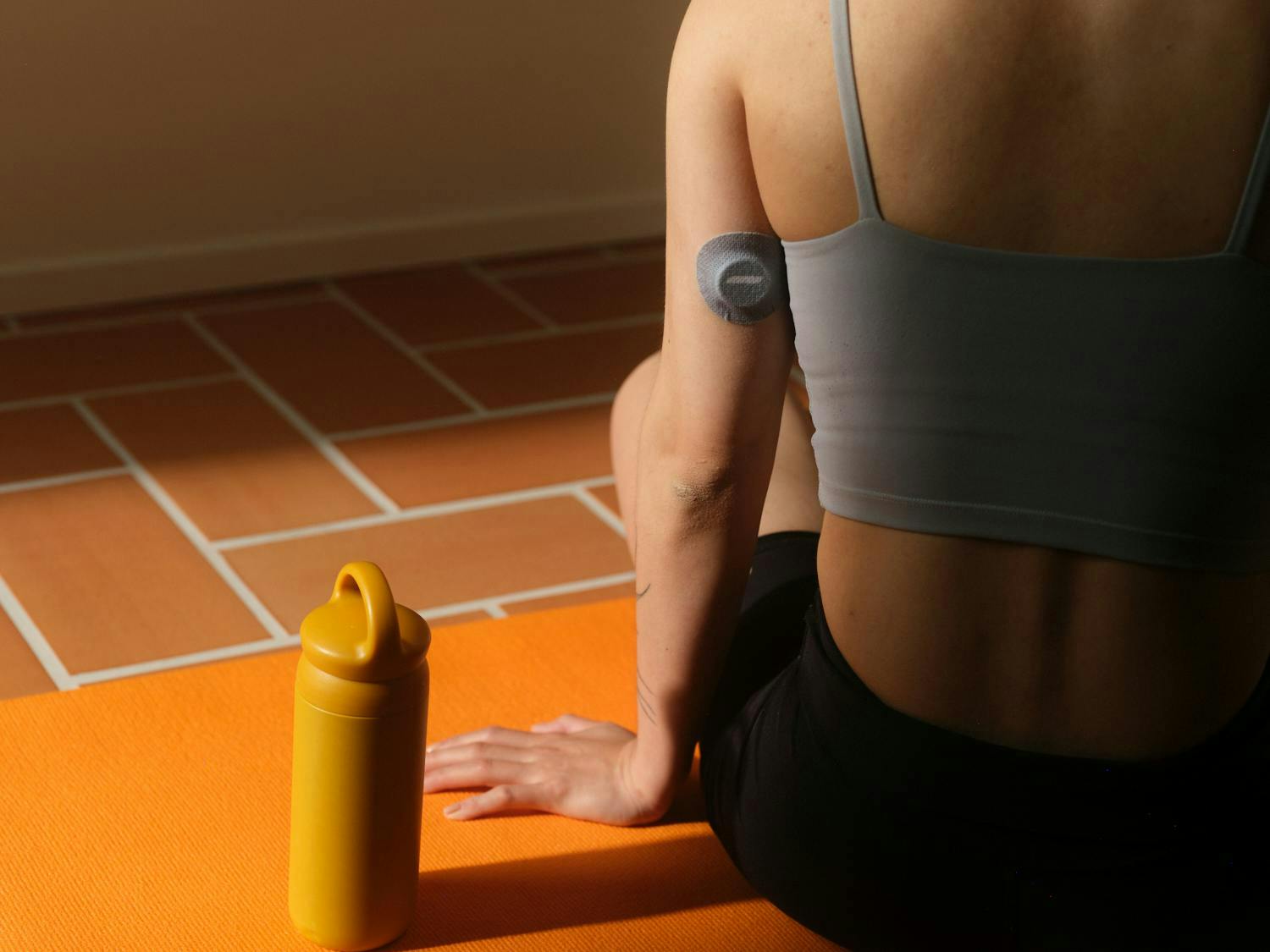Insulin resistance (IR) occurs when the cells in your body stop responding correctly to the hormone insulin, which regulates blood glucose levels.
The pancreas has to pick up the slack by pumping out larger-than-normal amounts of insulin in order to achieve normal blood glucose levels. This causes the cells to become desensitized to those above-average insulin levels, causing the body to continuously need more insulin to achieve normal blood glucose. If left unchecked, this desensitization can lead to the development of metabolic conditions like Type 2 Diabetes and heart disease.
IR often has few noticeable symptoms, which means most people with IR don’t know they have it until years down the road. But since it’s easier to reverse the negative effects of IR in the early stages, it’s important to catch it as soon as possible.
Common symptoms of insulin resistance
While it can be hard to initially detect IR, certain symptoms or warning signs may indicate its presence. Here are some of the most common insulin resistance symptoms:
- Excessive hunger and thirst: If your body isn’t producing enough insulin (the hormone that unlocks cells so glucose can enter them), excess glucose builds up in your blood. This taxes your kidneys (which are responsible for filtering out this extra glucose via your urine) by forcing them to pull water from your body — including tissues — to create enough urine to carry out the additional glucose. This can lead to you feeling excessively thirsty or hungry.
- High fasting blood sugar levels: When your pancreas can’t make enough insulin to keep your blood sugar levels in a healthy range, it leads to elevated blood sugar levels and, over time, prediabetes and Type 2 Diabetes. Your fasting blood glucose is considered high if it remains elevated for 8-10 hours after your last meal, or if a CGM measures it at around >140mg/dL or >7.8mmol/L approximately 2 hours after a meal.
- Abnormally high blood pressure: Research indicates that insulin can cause your body to retain sodium and water, which can lead to high blood pressure that burdens your heart [1]. While the factors that lead to high blood pressure are still debated, there is a link between insulin resistance and high blood pressure, so it’s important to realize that you may be at increased risk for IR if you have high blood pressure [2].
- Unexplained weight gain and difficulty losing weight: When your cells stop responding appropriately to insulin, your body’s glucose levels become elevated, promoting fat storage in your liver. This cycle repeats itself over and over, causing you to gain weight and have difficulty shedding it.
Surprising symptoms of insulin resistance
While the points above are some of the most common symptoms, IR also has several lesser-known warning signs. Here are four other early symptoms that are worth looking out for if you suspect you are at risk for developing insulin resistance.
1. Skin tags or dark patches
Researchers have found that skin tags (small, harmless growths on the skin) or dark patches are often found on obese people, non-insulin-dependent diabetics, and those with insulin resistance [3].
Skin tags form when loose collagen (a kind of protein) and blood vessels get tangled underneath the skin and are typically found around the neck, armpits, and groin, though they can sometimes appear on the eyelids as well [4].
While researchers suggest that overweight people tend to develop skin tags due to excessive skin-on-skin friction, other studies correlate multiple skin tags with Type 2 diabetes and insulin resistance.
Another study found that having multiple skin tags on the neck or in the armpit area is strongly linked to insulin resistance [6]. More research is needed to determine the exact mechanisms that cause this, but this much is certain: It’s important to pay attention to any unexpected skin tags or dark patches that appear on your skin.
2. Hair loss
One study of 324 women found that women who had some markers of insulin resistance (including waist circumference, neck circumference, waist-to-hip ratio, and insulin concentration in the blood, among others) had a significantly higher risk for female androgenic alopecia (AGA), or female pattern baldness [7]. This appears to happen partly because higher-than-average levels of sugar in your bloodstream can reduce the growth cycle of your hair, leading to hair loss.
Researchers studying diabetic subjects have found that high blood glucose can lead to inflammation that reduces the function of your vascular (circulatory) system — i.e., the vessels that carry blood throughout your body. If damaged blood vessels can’t deliver enough oxygen to your hair follicles, they stop growing normally [8].
3. Sugar cravings
Constantly craving cookies or ice cream doesn’t necessarily mean you have a sweet tooth; it could also mean you're experiencing IR. A 2018 study highlighted how the hypothalamus (the part of the brain responsible for regulating energy intake) reacts to sugar by releasing dopamine [9]. Because dopamine is a chemical that makes you feel good, it’s easy to get addicted to the “high” of a sugar rush.
But chasing after sugar ignites a vicious roller coaster when it comes to your blood glucose levels. When you eat a food high in refined sugar or simple carbs (i.e., something with a high glycemic index), your blood sugar spikes quickly — especially if you’re not simultaneously consuming fiber, protein, or fat to “soften” the spike.
Sensing this sudden surge in blood glucose, your body releases insulin to catch up with the spike, often more than it needs. Once insulin lets glucose into your cells, your blood glucose drops fast, leading to a major dip or crash — a condition sometimes known as non-diabetic hypoglycemia.
In this state, you may feel lightheaded, shaky, and weak. Your body then triggers cravings for more sugar to bring you back up to normal levels, repeating the cycle and leading to a vicious roller coaster. These constant spikes and crashes over an extended period, known as “high glucose variability,” can decrease your insulin sensitivity and lead to IR, making it all the more difficult for your body to regulate glucose properly.
Thankfully, you don’t have to remain on this sugar roller coaster forever. It’s important to remember that not all sugars are created equal. You can help regulate IR by getting glucose naturally from whole grains, fruits, vegetables, and nuts.
4. Constant lethargy or fatigue
A night of poor sleep can sometimes be to blame for feeling fatigued, but other factors may be at play if it’s a consistent problem rather than a “once-in-a-blue-moon” issue.
Research on diabetic patients has found strong correlations between insulin resistance and fatigue, but why does this happen [10]? One explanation is that decreased insulin sensitivity or insulin resistance (among diabetics and non-diabetics) results in high glucose and insulin levels in the bloodstream since your cells aren’t responding properly to insulin. People who experience this feel tired or lethargic because their cells are starved of glucose and can’t properly utilize it, even if more and more carbs are consumed.
Fatigue can also (ironically) make it harder for you to get a good night’s rest.
One study found that subjects who were more fatigued had a harder time falling asleep, woke up throughout the night, and/or woke up before they wanted to [11]. Other research has linked poor sleep — even just one night — with decreased glucose tolerance.
Since your body repairs cells during sleep — and requires enough glucose (energy) to do so — you can easily end up feeling tired or lethargic if your body can’t properly regulate glucose uptake.
This means that an erratic or inconsistent sleep schedule can reduce your body’s ability to properly regulate glucose levels and keep them within a healthy range, which activates a reinforcing cycle where blood sugar spikes and crashes make your sleep worse, which then triggers even more ups and downs — leading you toward IR in the long run.
Key Takeaways
Skin tags, hair loss, sugar cravings, and constant lethargy or fatigue can all be subtle early warning signs of insulin resistance. If you are experiencing some of these symptoms, make an appointment with your doctor to see if IR might be to blame. If it is, here are some of the proactive steps you can take to help reverse it:
- Manage Your Weight: Maintaining a healthy weight for your body type is one of the best ways to prevent (or reverse) IR. Learn more about weight loss myths and the relationship between glucose and weight loss.
- Aim for a Healthier Diet: The old adage “you are what you eat” holds true when it comes to protecting yourself against the negative impacts of IR. Eat healthy foods like whole grains, nuts, fruits, vegetables, and lean meat, and experiment with time-restricted eating (TRE) or eating according to your circadian rhythm to help regulate your blood glucose levels.
- Create an exercise routine: Practicing a combination of resistance training and aerobic exercise (2-3 days per week of running, walking, or cycling, and 1-2 days per week of lifting weights) can have a significant impact on your metabolic health. While there are various pros and cons associated with working out at various times of the day, the best type of exercise (and time to do it) is ultimately whichever one you will stick with.
- Glucose monitoring: A continuous glucose monitor (CGM) is one of the best ways you can understand your own glucose levels in real-time and how they fluctuate based on your diet and lifestyle. Since insulin resistance often presents no noticeable symptoms, getting personalized data from a CGM can be eye-opening and empowering — allowing you to figure out concrete steps to taking control of your health and reversing insulin resistance, if you have it.
References:
- https://mdpi-res.com/d_attachment/biomedicines/biomedicines-10-02374/article_deploy/biomedicines-10-02374.pdf?version=1663927136
- https://www.ncbi.nlm.nih.gov/pmc/articles/PMC3996172/#:~:text=Whereas%2C%20in%20the%20state%20of,pressure%20%5B15%2C16%5D.
- https://www.jaad.org/article/S0190-9622(11)01765-8/fulltext#:~:text=Background%3A%20Multiple%20skin%20tags%20are,factor%2Dlike%20(IGF1).
- https://www.nhs.uk/conditions/skin-tags/
- https://bmcdermatol.biomedcentral.com/articles/10.1186/s12895-020-00111-0
- https://pubmed.ncbi.nlm.nih.gov/20464083/
- https://pubmed.ncbi.nlm.nih.gov/12775957/
- https://www.ncbi.nlm.nih.gov/pmc/articles/PMC3546345/
- https://www.ncbi.nlm.nih.gov/pmc/articles/PMC6234835/
- https://www.ncbi.nlm.nih.gov/pmc/articles/PMC2905388/
- https://academic.oup.com/biomedgerontology/article/63/10/1069/559215


